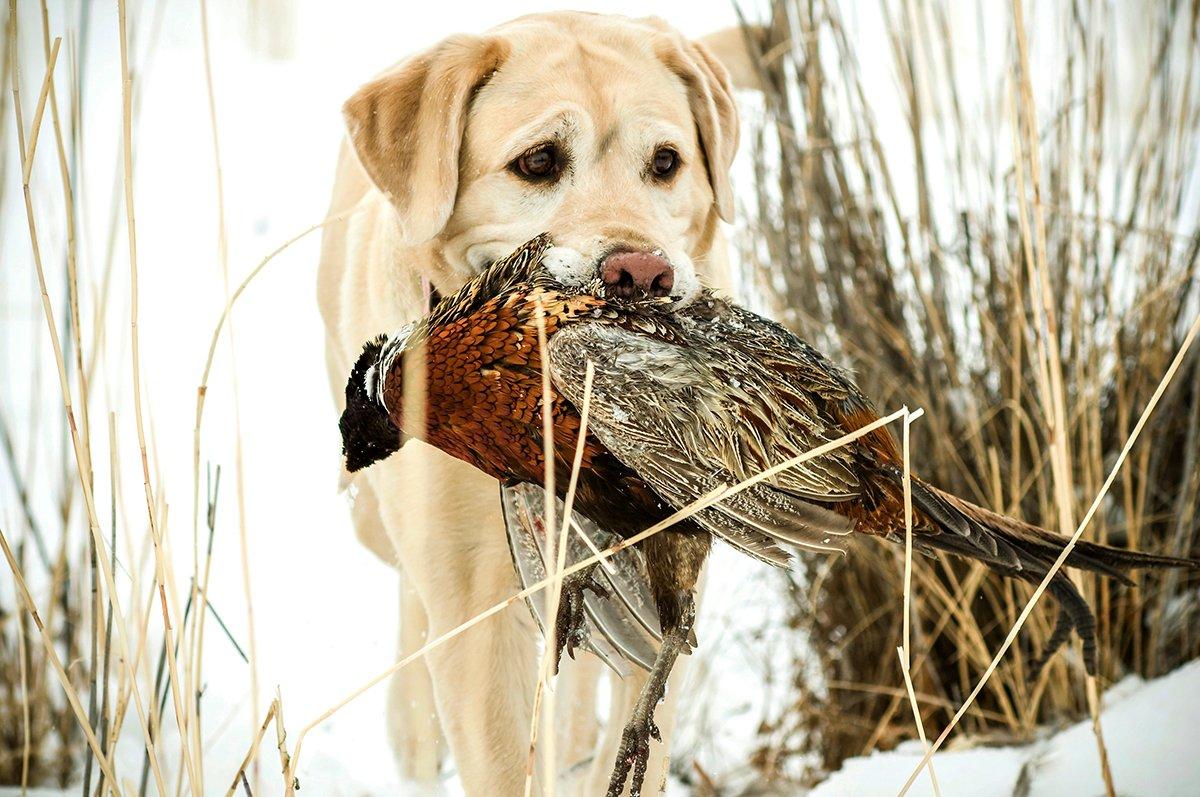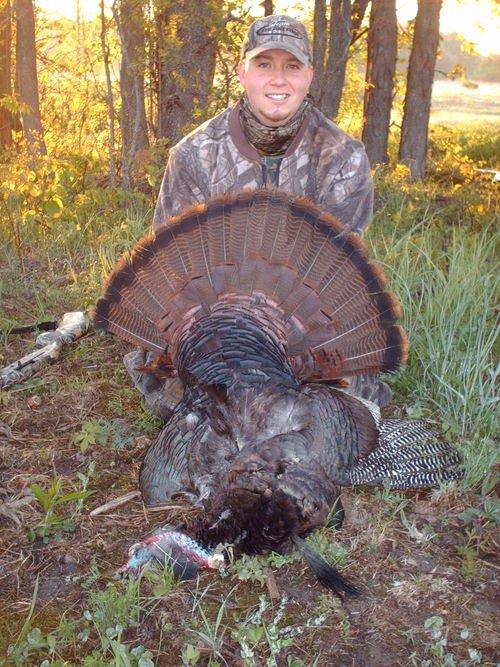Hunting in the wintertime for upland critters like rabbits, squirrels, pheasants, and grouse is challenging, but these tips will have you on your way to a good wild game dinner
Hunting upland game animals like rabbits, squirrels, quail, and grouse can be really tough during wintertime, especially late in the season. Snow and ice have destroyed food supplies and cover, reducing wild game populations considerably from what they were earlier. Hunters and predators have taken a toll on the game, too. The surviving animals are canny and often elude casual hunters.
Still, hunting small game near the season's end can still be productive and fun, especially when hunters have some tricks up their sleeves that give them advantages. You'll find 15 to try in this round-up of practical advice.
1. Look Back for Rabbits
Rabbits jumped in isolated winter cover patches will try to sneak behind hunters rather than cross open ground. A cottontail may race away, vanishing from sight, then circle well behind its pursuers. Others remain motionless until the gunners pass, then shoot out behind. Make it a habit to look over your shoulder every few steps and you'll glimpse some of these renegades before they escape. Snap shooting is a must, so carefully identify your target before pulling the trigger.
2. Push the Cattails
When snowflakes fall late in the season, many pheasant hunters call it quits. But nimrods willing to brave the elements are often rewarded with heavy game vests, especially when hunting big cattail marshes that provide the dense thermal cover ringnecks need to survive inclement weather. These wetland areas don't hold many birds early in the season when water is present. But when the ice gets thick enough to walk on, pheasants gravitate to these hotspots, and hunters can move through the cattails easier to find their quarry. Go slowly and quietly. Roosters will run or take to the air as soon as they hear the hunters, and you want to get as close as possible before they flush. Slow movements are safer, too. It doesn't take much ice to support a pheasant, but it takes a fair amount to support you and your dog. Err on the side of caution. Always.
3. Listen Up
If you were to follow a veteran squirrel hunter into the woods and observe the things he does, you might notice him stopping now and then and cupping a hand around an ear to better hear sounds made by his quarry. He listens for squirrels rustling leaves on the ground and in trees. He listens for barking or chattering squirrels he can stalk. And when hunting near oaks or hickories, he listens for the pitter-patter of acorn or hickory nut shells falling to the ground as bushytails dig into their favorites. Hunt with your eyes and your ears, old timers advise.
(Don't Miss: How to Hunt Giant Canecutter Rabbits)
4. Kneel and Shoot
A simple yet effective way to increase your number of shots at late-season mourning doves is to shoot from a kneeling position. Most hunters stand to shoot, and when they stand, doves see them. That's when the birds go into those corkscrew maneuvers and power swoops that make them so difficult to hit. If you shoot from your knees, however (practice makes perfect), the doves never know you're around and more shooting opportunities result.
5. Whistle Stop
When you flush a cottontail from its form, sound off with a loud, shrill whistle before it dashes out of sight. Some rabbits totally ignore the sound, but many will freeze in their tracks when they hear the whistle, allowing extra seconds to shoot before the opportunity is gone.
6. Go in the Snow
A light snow creates great winter grouse-hunting conditions. The ruffs leave distinctive tracks when walking in the white stuff, so you know when they are near. Then you can look ahead to gauge cover and decide the birds' probable location. Snow makes them hold tighter, so flushes, and shots, are at close range. And because grouse socialize more in extreme cold, snow time often finds several birds foraging together, making it easier to bag a few for dinner.
(Don't Miss: 5 Ways to Ruin a Squirrel Dog)
7. Quiet, Please
An old squirrel hunter I knew used a simple method to help him sneak up on squirrels in leaf-bare winter trees. He kept noise to a minimum by slipping an extra-large pair of wool socks over the outside of his boots. The extra padding silenced his footsteps, even with dry, crackling leaves underfoot.
8. Bigger Rabbits Require Bigger Shot
When hunting bottomland habitat along Mid-South streams, hunters often encounter swamp rabbits. These water-loving bunnies average twice as big as a typical cottontail and require heavier shot for a clean kill. While you might use loads of No. 6 or 7-1/2 shot in a .410 or 20-gauge where cottontails are most abundant, it's wise to switch to 2s or 4s and a big gun (12 or 16 gauge) when swampers are your main targets. Magnum shells loaded with a mix of 2s and 4s are excellent for bagging these giant rabbits, which weigh 4 to 8 pounds, sometimes more.
9. Bust Them Up
Dogless quail hunters often locate a covey, split it up as fast as possible, then work back through the cover for single birds. This means the hunter must move quickly to flush singles and at the same time mark the locations of multiple birds if they flush wildly. Estimate the number of bobwhites in the covey rise and then keep count of lone birds that flush as you zigzag through the cover for singles. If you've hunted through the area where the scattered birds settled and have only gotten up half of those counted on the covey rise, you'll know there are still more birds nearby and can work the surrounding cover appropriately.
(Don't Miss: 10 Tips for Training a Squirrel Dog)
10. Watch for Whitewash
In many areas, hunters pursue woodcocks that are just passing through during their southbound migration. To know if the long-billed birds have dropped in for a visit, they look for the chalky whitewash of droppings timberdoodles deposit on the forest floor. Normal weather quickly erases this, so finding it indicates birds are, or recently were, nearby. Watch, too, for numerous quarter-inch holes in soft earth around ponds, creeks and other waters. The woodcock makes these when using its long beak to probe the ground for worms, its favorite food.
11. Heads, Not Tails
Shots at ringneck pheasants often are missed because the male bird's long tail feathers make the target appear bigger than it really is. You'll connect more often if you concentrate only on the head/neck/breast area and ignore the rearward tail section. You should also delay your shot until the pheasant has towered and leveled off. If you shoot sooner, you risk hitting the bird with an overly dense shot pattern that could ruin a potential wild game dinner.
12. Ready for Ruffs
Ruffed grouse are fast, deceptive targets that require hunters to be ready to shoot in a split second. Expert scatter-gunners might kill a few birds when using a shoulder or cross-armed carry, but with these positions, vital seconds are lost. It's best to keep the grouse gun in a port-arms position, held diagonally in front of the body with the muzzle pointing upward. The right hand is on the grip, with the index finger or thumb near the safety catch. The left hand cradles the fore-end, instantly ready to guide the shot. This reduces movements needed to get on a swift-flying grouse, with more downed birds resulting.
(Don't Miss: 25 Hillbilly Squirrel Hunting Tips)
13. Call, Listen and Learn
When targeting vocal western quail species such as California, Gambel's and scaled quail, you can use a quail call to help find good winter hunting locales. While traveling along backcountry roads, especially in areas with scattered water holes, stop periodically and call, then listen for coveys to answer. That way, you don't waste time walking where there are no birds. You can quickly learn to recognize and imitate the variety of sounds these birds make by listening to audio clips and videos on the internet.
14. Ridge Running
Veteran chukar hunters have a trick for getting within range of their quarry. They use binoculars to watch for chukars heading up the nearest side of a ridge, then conduct an out-of-sight stalk up the opposite side. The chukars will almost invariably stay on the side of the ridge overlooking the spot where they last saw the hunter, and they'll focus their attention in that direction. The hunter can then climb up the other side of the ridge and go over the top undetected. When chukars suddenly find themselves below a hunter, they usually freeze, and if they are not already in gun range, the hunter can walk right down on them.
15. No Snow Means Go
Snowshoe hares turn from brown to white in winter and are difficult to see when snow is on the ground, just as nature intended. Dogless hunters sometimes spot them by looking for their round, black eyes and the black tips of their ears. But thanks to climate change, many areas in the hares' northern range don't see snowfall until later in the season or not at all. Hunting during these times, when snow is absent, can bring increased success because then the white bunnies stand out in stark contrast to their dark, brushy environs and are easier to find. Move slowly and look carefully, just as you would with cottontails.
(Don't Miss: 25 Tips for Dove Hunters)














